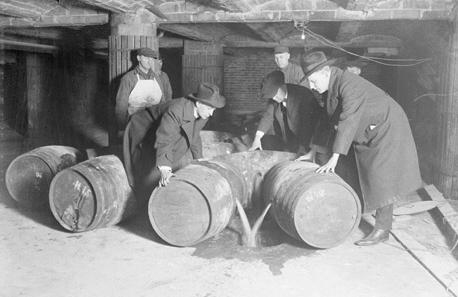The term "dry law" is called the prohibition (full or partial) of the circulation of alcohol-containing substances.
Prohibition in the USA

Between 1920 and 1933, the United States banned the sale, transportation, and production of alcohol. Prohibition in America was introduced after the adoption of the Eighteenth Amendment to the US Constitution. Outlawing both possession of alcohol and its consumption were declared. The attitude towards the ban on alcohol in American society was twofold. On the one hand, adherents of the law perceived it as a victory of morality and health. The undoubted success was the halving of alcohol consumption in the 1920s, which remained below the level corresponding to the period preceding the ban until 1940. On the other hand, opponents of the law (“wet”) criticized the ban, calling it an invasion of rural Protestant ideals in various aspects of the lives of citizens, immigrants and Catholics. Despite the positive results of the prohibition legislation, there were immeasurably greater negative consequences for the country, which allowed opponents of the law to ratify the Twenty-First Amendment to the Constitution 13 years later, repealing the unpopular prohibition in America.

One of the sad outcomes was a significant increase in the number of criminal gangs. The American mafia first announced itself. Numerous criminal organizations profited from smuggling, illegal production and distribution of alcohol. Anti-alcohol measures negatively affected the country's economy. The days of Prohibition were marked by a rampant increase in corruption in the ranks of the police and among politicians.
The sad experience of forced sobriety in the USSR
The anti-alcohol campaigns carried out in the USSR represented extremely unpopular government measures aimed at fighting to reduce the consumption of alcoholic beverages.
The last campaign was preserved in the memory of the people under the name “Gorbachev’s dry law”. Mikhail Sergeevich initiated the beginning of the fight against alcoholism immediately after coming to power. The situation in Soviet society in 1985 required decisive action, since alcoholism in the country reached the scale of a national catastrophe. Prohibitive measures were taken, as a result of which the sober population significantly improved demographic indicators, the life expectancy of the male population of the country increased, the number of crimes committed
while intoxicated decreased
. But the ban on alcohol in the
Soviet Union, as well as prohibition in America, led to economic decline. The lack of profit from the sale of alcohol in a short time led to a deficit budget. Legislators, of course, expected a different effect, but received kilometer-long lines in stores, numerous cases of poisoning with alcohol-containing chemicals, the boom of home brewing, and the underground production of alcohol. In the
mass consciousness, the anti-alcohol campaign was perceived as an absurd decision of the authorities directed against the "common people", forced by all means to "get" alcohol, still available to the party-economic elite. However, the country's leaders were aware of the disappointing results of the prohibition in America and Finland. It remains a mystery why the initially restrictive restriction of alcohol consumption by administrative measures seemed to the head of state the only correct solution to the problem of alcoholism.